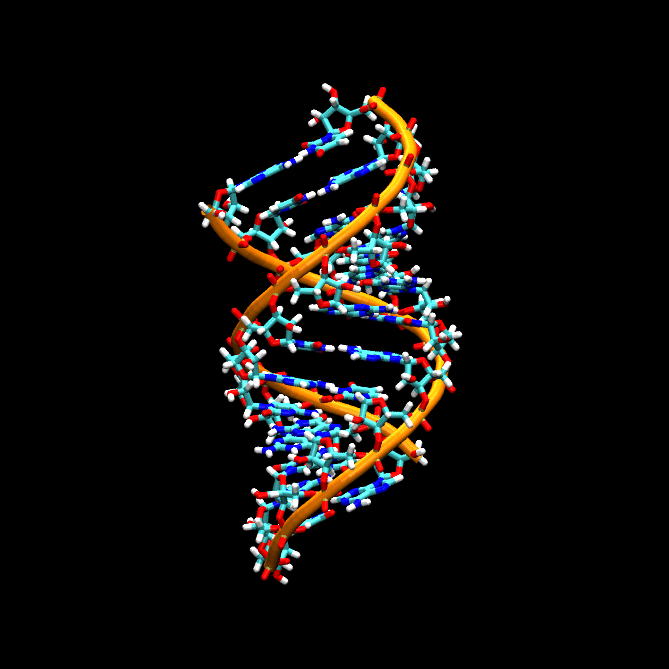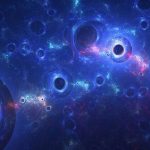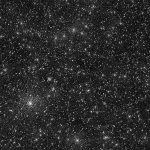Key takeaways
- Despite various religious explanations attributing life’s origin to supernatural beings, the scientific community seeks evidence-based answers.
- Central to Totani’s research is RNA (ribonucleic acid), a simpler precursor to DNA, which plays a key role in life’s emergence.
- The study of RNA’s self-replicating properties is crucial to understanding how life might originate.
- Research indicates that a chain of nucleotides (RNA’s building blocks) must be 40 to 100 nucleotides long for self-replication to occur.
- Current estimates suggest the observable universe’s matter is insufficient for forming the necessary RNA length.
Under certain conditions, the building blocks of life may and do spontaneously assemble themselves. That’s known as spontaneous generation, or abiogenesis. Of course, much of the facts are kept from us, and we have no idea how it all transpired.
Or how regularly it may occur.
Of course, different religions have different theories about how existence began, and they all rely on the magical hands of various supernatural beings to explain everything. However, although such answers are entertaining, many of us are left wanting more.
“How did life arise?” is one of life’s most interesting mysteries, and one that science is always wrestling with.
Tomonori Totani is one scientist who finds the question fascinating. Totani is an astronomy professor at the University of Tokyo. He has published a new work titled The Emergence of Life in an Inflationary Universe. It is published in Nature Scientific Reports.
Totani’s work relies primarily on a few ideas. The first is the Universe’s huge age and expanse, its expansion throughout time, and the likelihood of events occurring. The second is RNA, precisely the length of a nucleotide chain required to “expect a self-replicating activity,” as stated in the research.
Totani’s research, like practically other work on abiogenesis, focuses on the fundamental components of life on Earth: RNA, or ribonucleic acid. DNA establishes the guidelines for how an individual life forms take shape, but DNA is much more complex than RNA.

Even still, RNA is orders of magnitude more complicated than the basic chemicals and molecules found in space or on the surface of a planet or moon. However, because it is simpler than DNA, it is more likely to develop naturally.
There is also one evolutionary hypothesis that states that, while DNA contains the instructions for building an organism, RNA governs the transcription of DNA sequences. It’s called RNA-based evolution, and it states that RNA is subject to Darwinian natural selection and heritability. That’s one of the reasons for comparing RNA and DNA.
RNA is a chain of molecules called nucleotides. According to some study, a chain of nucleotides must be at least 40 to 100 nucleotides long before self-replication, often known as life, may occur.
Over time, enough nucleotides can combine to form a chain of sufficient length. But the issue remains: has the Universe had enough time to exist? Well, because we’re here, the answer must be yes, right?
But wait. The press announcement for this new work states that “current estimates suggest that the magic number of 40 to 100 nucleotides should not have been possible in the volume of space we consider the observable universe.”
The word “observable universe” is essential here.
“However, there is more to the universe than the observable,” Totani noted. “Contemporary cosmology agrees that the cosmos had a period of fast inflation, resulting in a large region of expansion beyond what we can directly perceive. Incorporating this larger volume into abiogenesis models significantly enhances the likelihood of life arising.”
Our universe was created at the Big Bang, a single inflationary event. Totani’s work suggests that our Universe has more than 10^100 Sun-like stars, but the visible Universe only has around 10 sextillion (10^22) stars.
We know that life has existed at least once, thus it is not impossible that abiogenesis will occur at least once more, even if the chances are infinitesimally small.
According to statistics, the quantity of stuff in the visible Universe should only be able to make RNA that is 20 nucleotides long, far less than the 40 to 100 figure. However, due to fast inflation, most of the Universe remains unobservable. It’s simply too far away for light from the Big Bang to reach us.
Cosmologists calculate a total of 10^100 Sun-like stars by combining the number of stars in the visible and unobservable Universes. That means there is a lot more matter at play, and the abiogenic formation of long enough RNA chains is not just plausible, but also likely, if not inevitable.
In his study, Professor Totani describes the fundamental link under research. “Here, a quantitative relation is derived between the minimum RNA length/min required to be the first biological polymer, and the universe size necessary to expect the formation of such a long and active RNA by randomly adding monomers.”
Is it becoming confusing? Here is a hopefully more comprehensible overview.
The Universe is much bigger than what we can see, with an estimated 10^100 stars similar to our Sun. For the chance of abiotic RNA production on an Earth-like planet to equal 1, or unity, the minimum nucleotide length must be less than around 20 nucleotides, which is significantly less than the previously claimed minimum of 40 nucleotides.
However, experts believe that RNA that is just 20 nucleotides long cannot be self-replicating, at least not from the standpoint of terrestrial life. In his article, Totani states: “Therefore, if extraterrestrial organisms of a different origin from those on Earth are discovered in the future, it would imply an unknown mechanism at work to polymerize nucleotides much faster than random statistical processes.”
What would be the process?
Who knows, but this is probably an inflection point when people of religion can say, “Why, God, of course.”
Totani’s work has in no way supplied a solution. However, as with all scientific effort, it refines the question and encourages others to investigate it.
“Like many in this field of research, I am driven by curiosity and by big questions,” Totani told me.
“When I combine my current research into RNA chemistry with my extensive cosmology background, I realize there is a feasible route for the cosmos to have transitioned from an abiotic (lifeless) to a biotic state. It’s a fascinating notion, and I hope future study will build on it to find the beginnings of life.”
This article was originally published by Universe Today. Read the original article.


